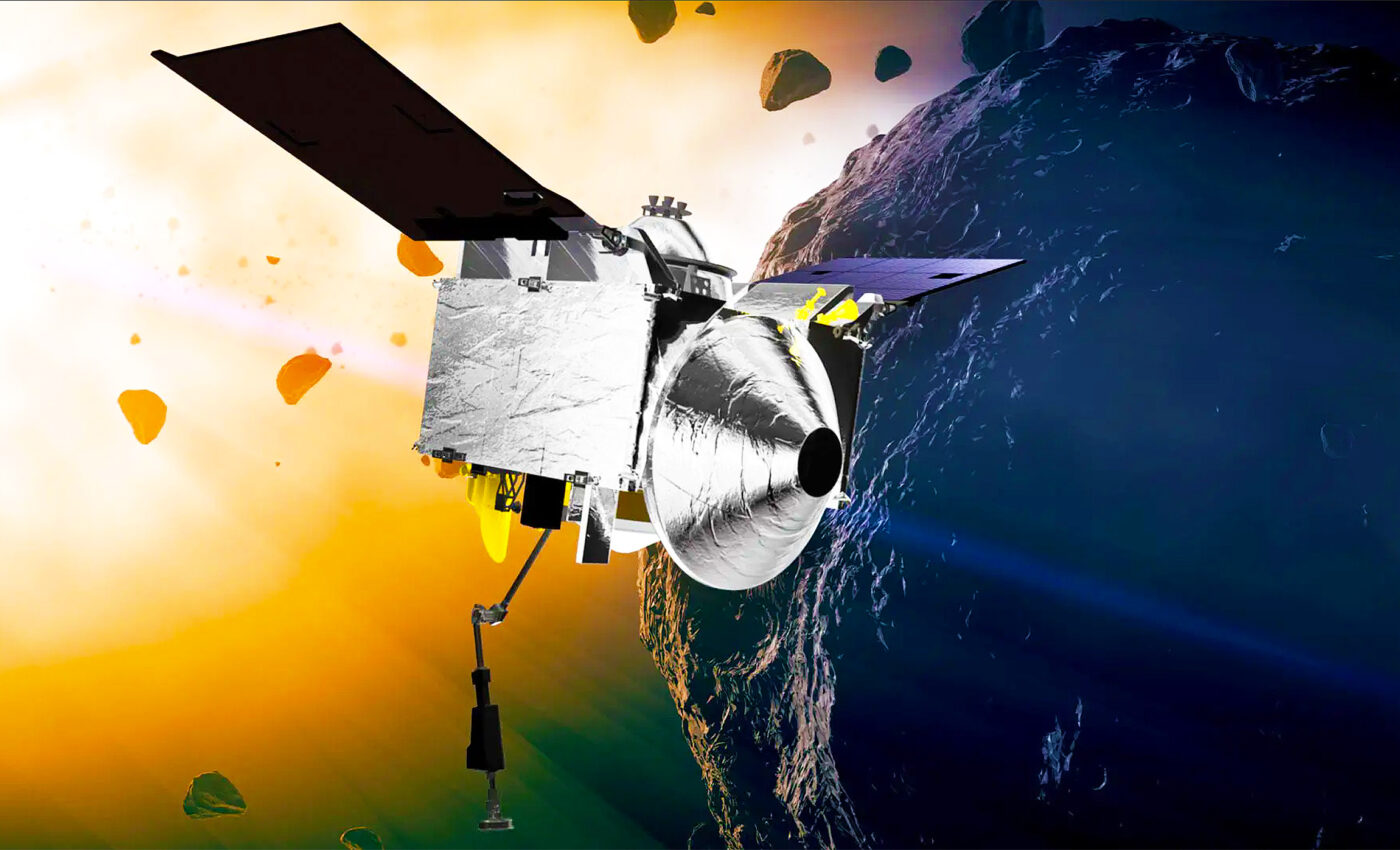
Mysterious black dust found on Bennu asteroid samples forces NASA to pause
NASA was recently forced to pause its examination of the Bennu asteroid samples that landed on Earth this week, following the discovery of unexplained black dust within the container.
The samples, originally gathered from the surface of asteroid Bennu in 2020 during NASA’s OSIRIS-REx mission, made their landing in the Utah desert last Sunday.
Unknown substances on Bennu sample
Upon opening the canister, which held approximately eight ounces of debris, scientists discovered unknown substances on the Touch and Go Sample Acquisition Mechanism (TAGSAM) located above the avionics deck.
A photograph taken by the scientists clearly showed that the interior of the silver lid was marked with black material. NASA announced that this dust is set for a preliminary analysis to verify whether it originates from asteroid Bennu.
“The TAGSAM, which holds the bulk of the sample, will be carefully opened in the coming weeks,” experts from NASA declared.
Securely transferring the sample
The residue observed on the avionics deck, detected on Tuesday, is presumed to have originated during the collection process. NASA reported that this issue was resolved, enabling the secure transfer of the sample, but confirmation by scientists is pending.
Dante Lauretta, the OSIRIS-REx principal investigator, captured the image of the sample canister following the successful lid removal, adhering to the stipulated curation process.
Significance of the study
The information acquired from the OSIRIS-REx mission is anticipated to enhance our understanding of potentially hazardous asteroids and contribute to future asteroid deflection strategies.
Curation facility
For thorough examination and preservation, the asteroid samples are to be managed at a newly established curation facility. This facility is overseen by NASA’s Astromaterials Research and Exploration Science division (ARES), situated at the Johnson Space Center in Texas.
OSIRIS-REx
Launching in 2016, the OSIRIS-REx spacecraft embarked on a $1 billion mission, reaching Bennu in 2018 and collecting samples in 2020 using a vacuum-equipped arm. By the time it returned, the spacecraft had traversed four billion miles.
Despite entering the atmosphere at 27,650 mph, it was vital to prevent the sample from contamination, slowing it to 11 mph using a parachute.
Recovery mission
NASA orchestrated a meticulous recovery mission in Utah, involving helicopters and a temporary clean room.
The OSIRIS-REx spacecraft deposited the sample container into Earth’s orbit on Sunday before proceeding to its next destination.
Large extraterrestrial sample
The retrieved pebbles and dust are the largest extraterrestrial sample since the lunar missions and offer invaluable insights into the formation of Earth and life, giving us “an extraordinary glimpse” into the past 4.5 billion years, according to NASA Administrator Bill Nelson.
Bennu
Bennu, currently orbiting the sun 50 million miles away from Earth, is roughly the size of the Empire State Building.
The asteroid is a fragment of a larger space rock and is considered the most hazardous object in the Solar System due to its potential collision course with Earth, expected to come dangerously close to our planet in September 2182.
The observations and data from OSIRIS-REx will be instrumental in any future asteroid-deflection efforts. The spacecraft is now on course to reach asteroid Apophis in 2029.
—
Like what you read? Subscribe to our newsletter for engaging articles, exclusive content, and the latest updates.
—
Check us out on EarthSnap, a free app brought to you by Eric Ralls and Earth.com.













